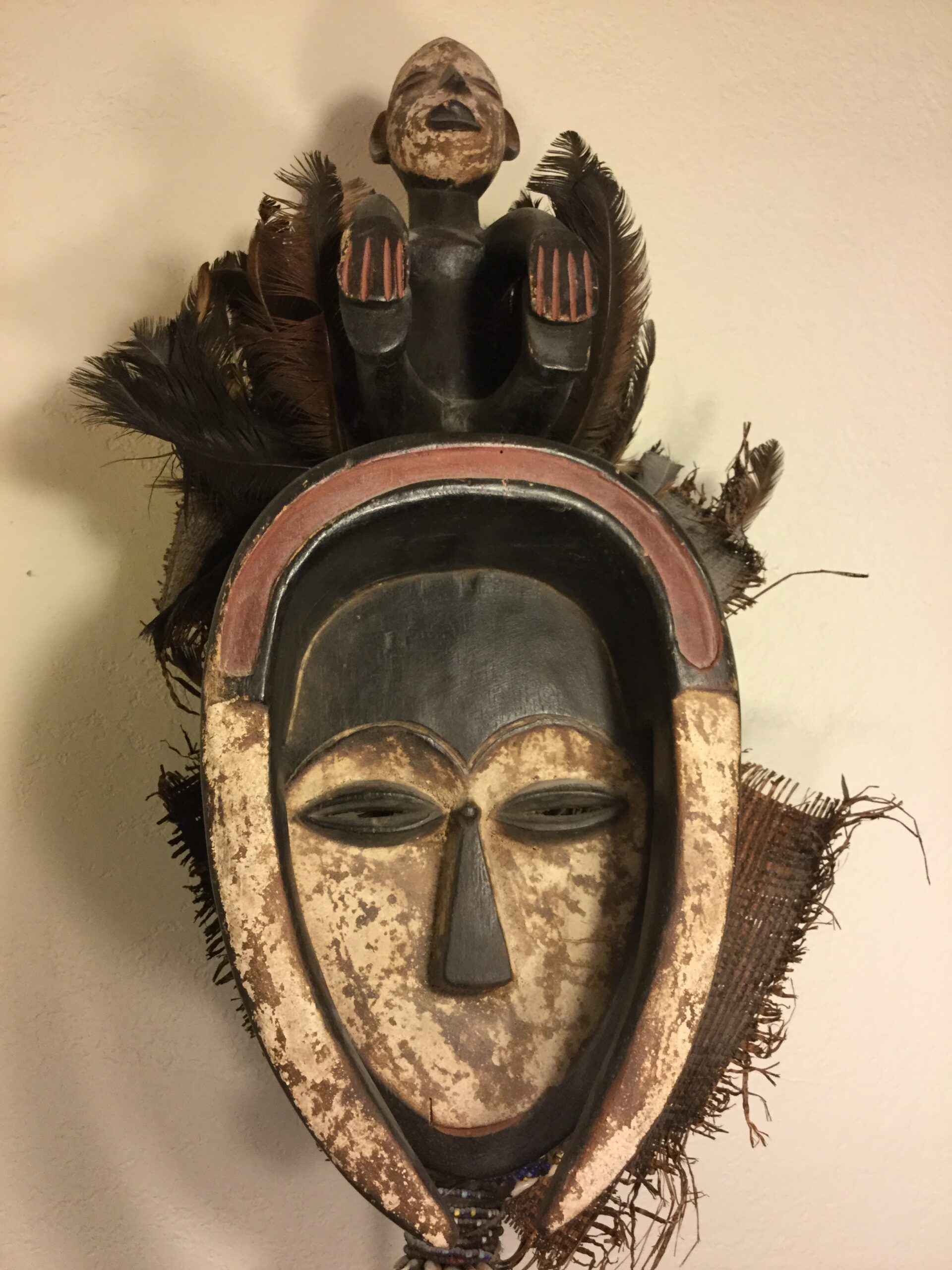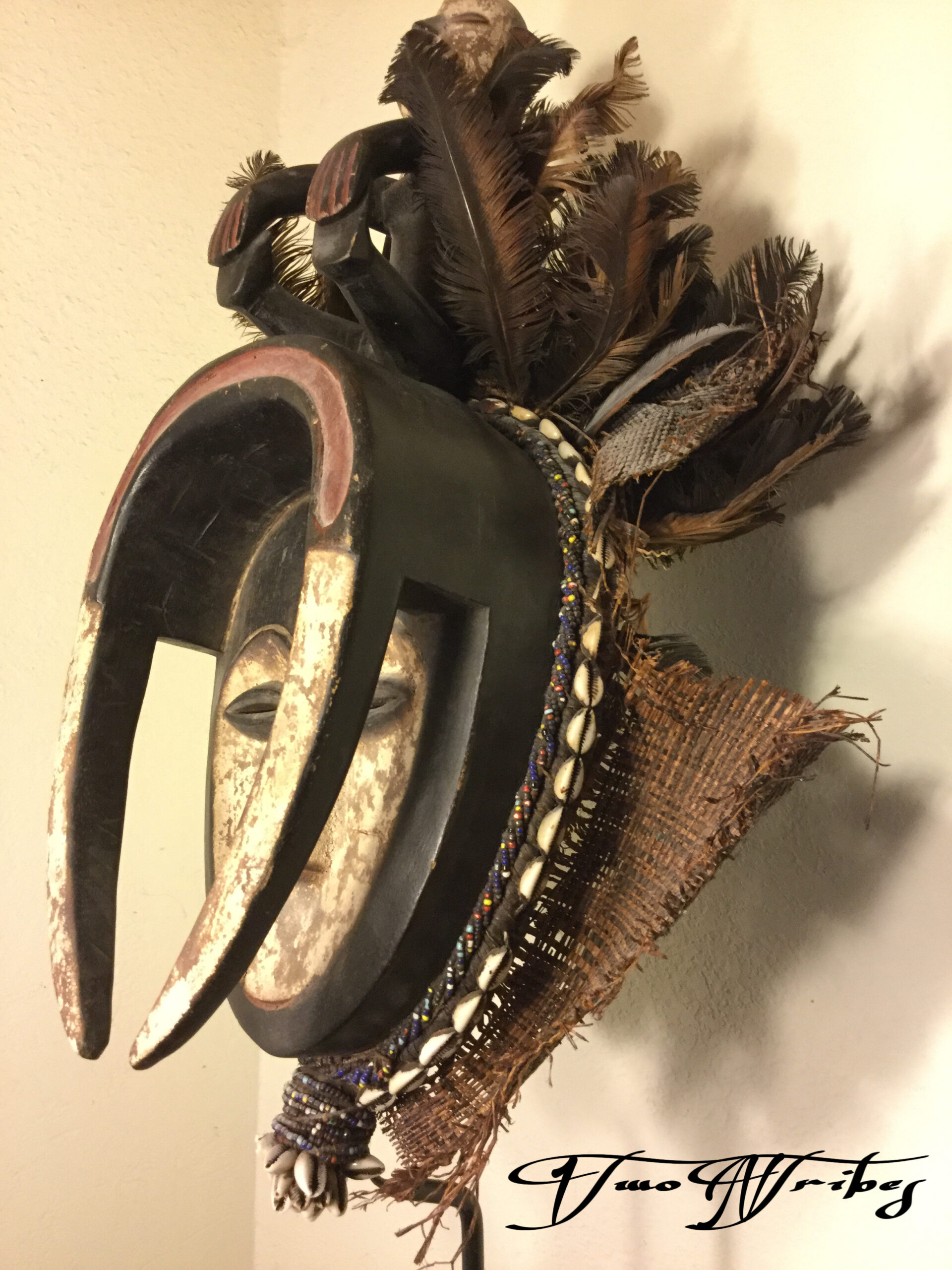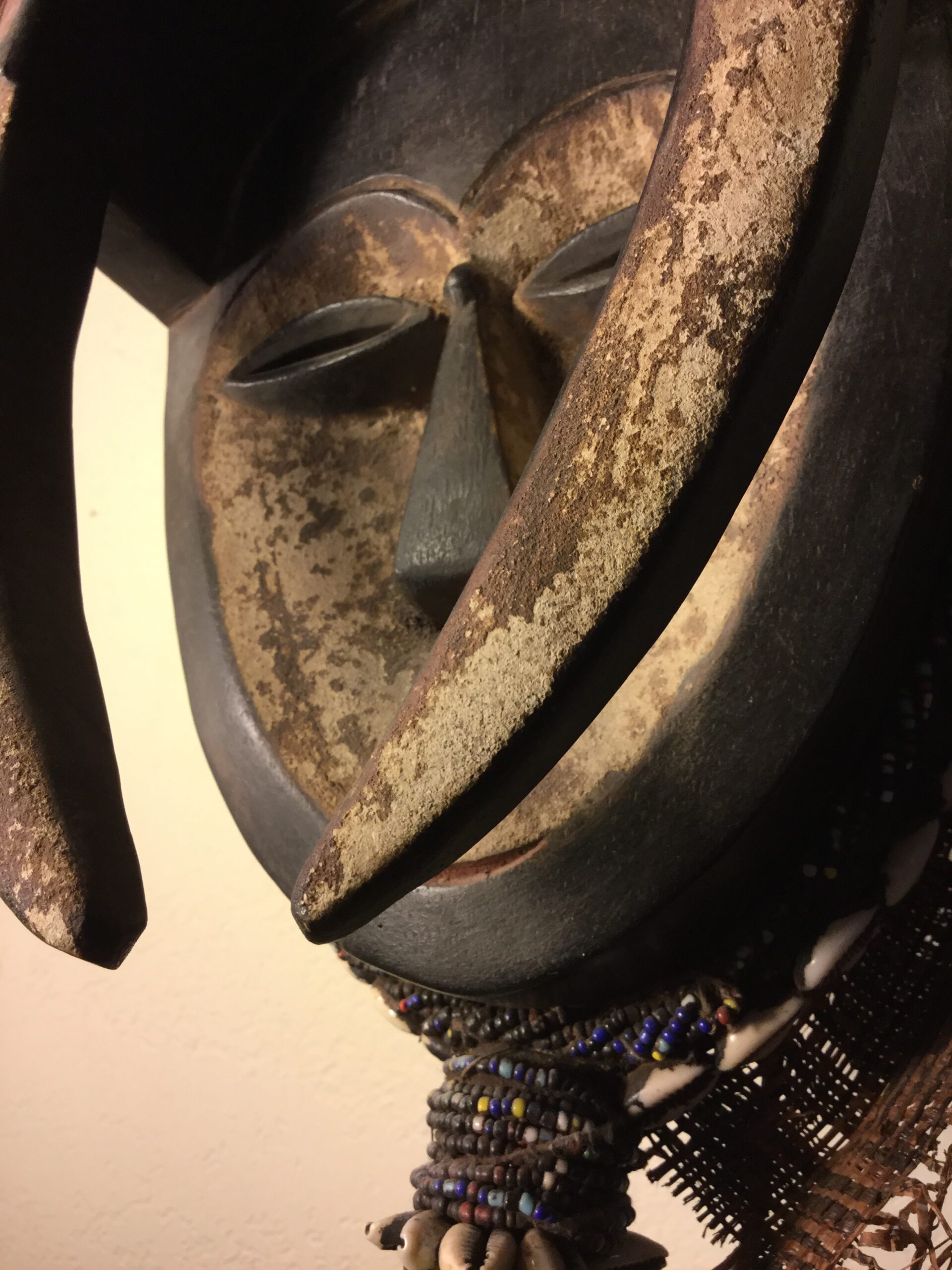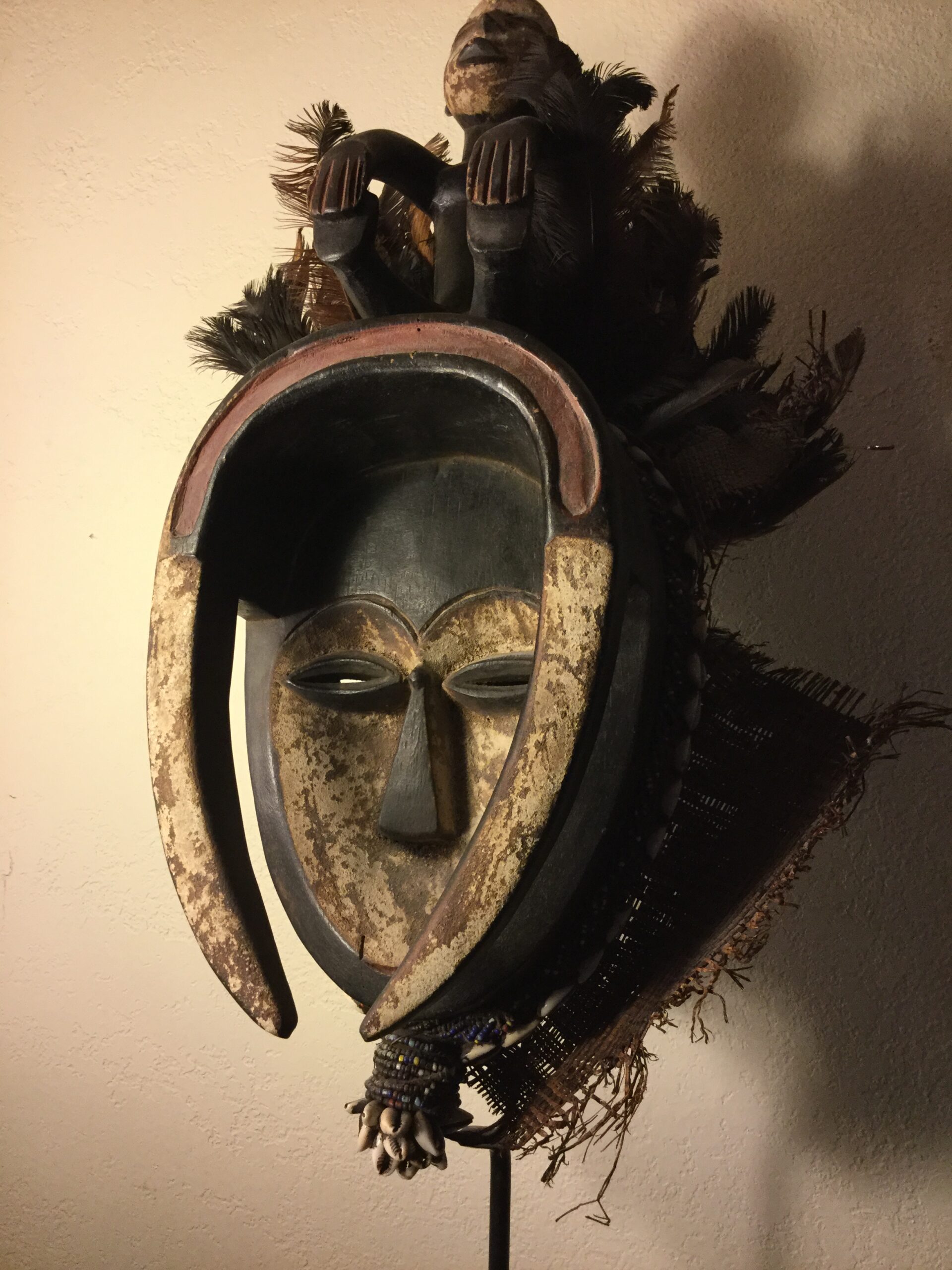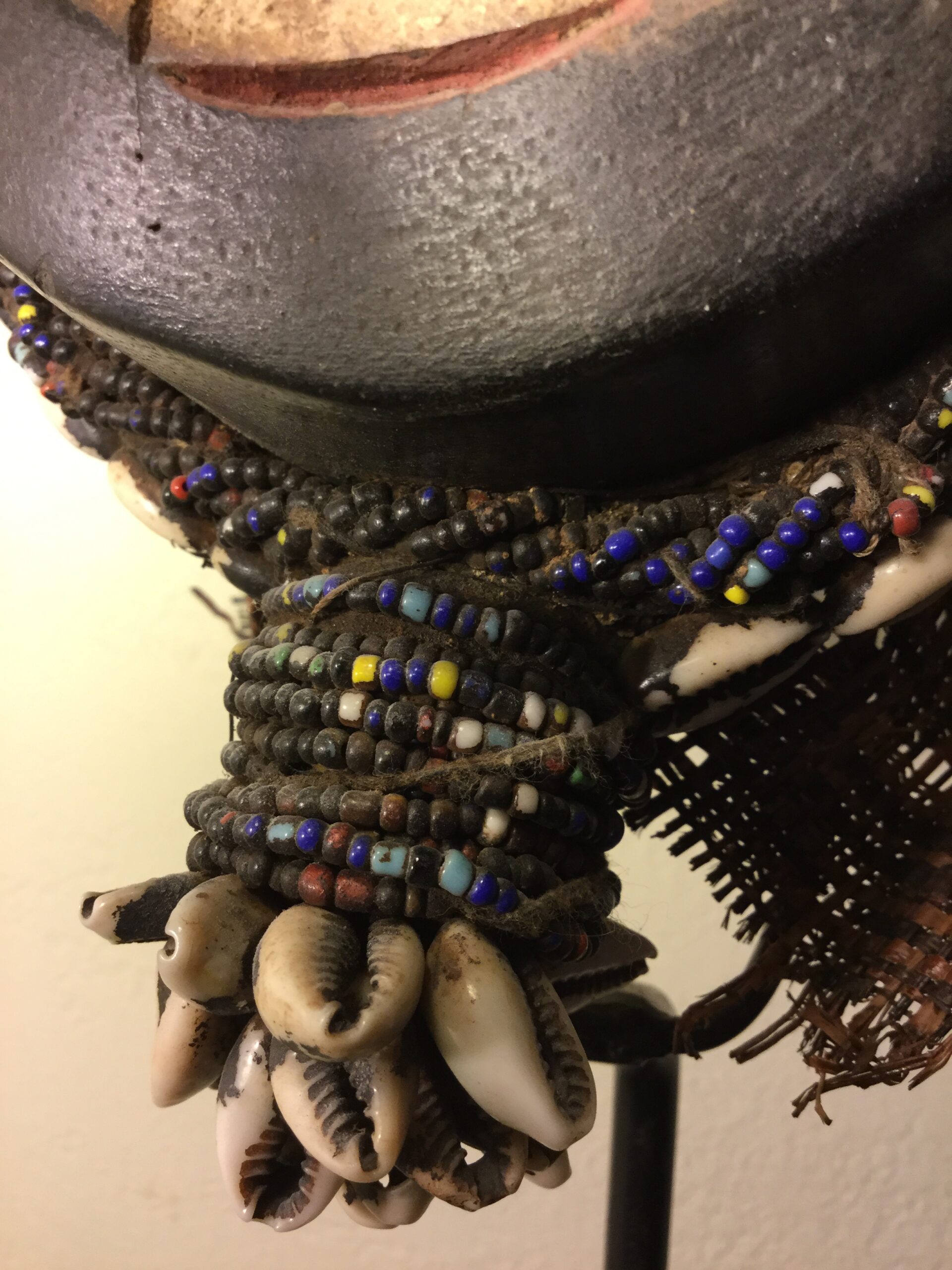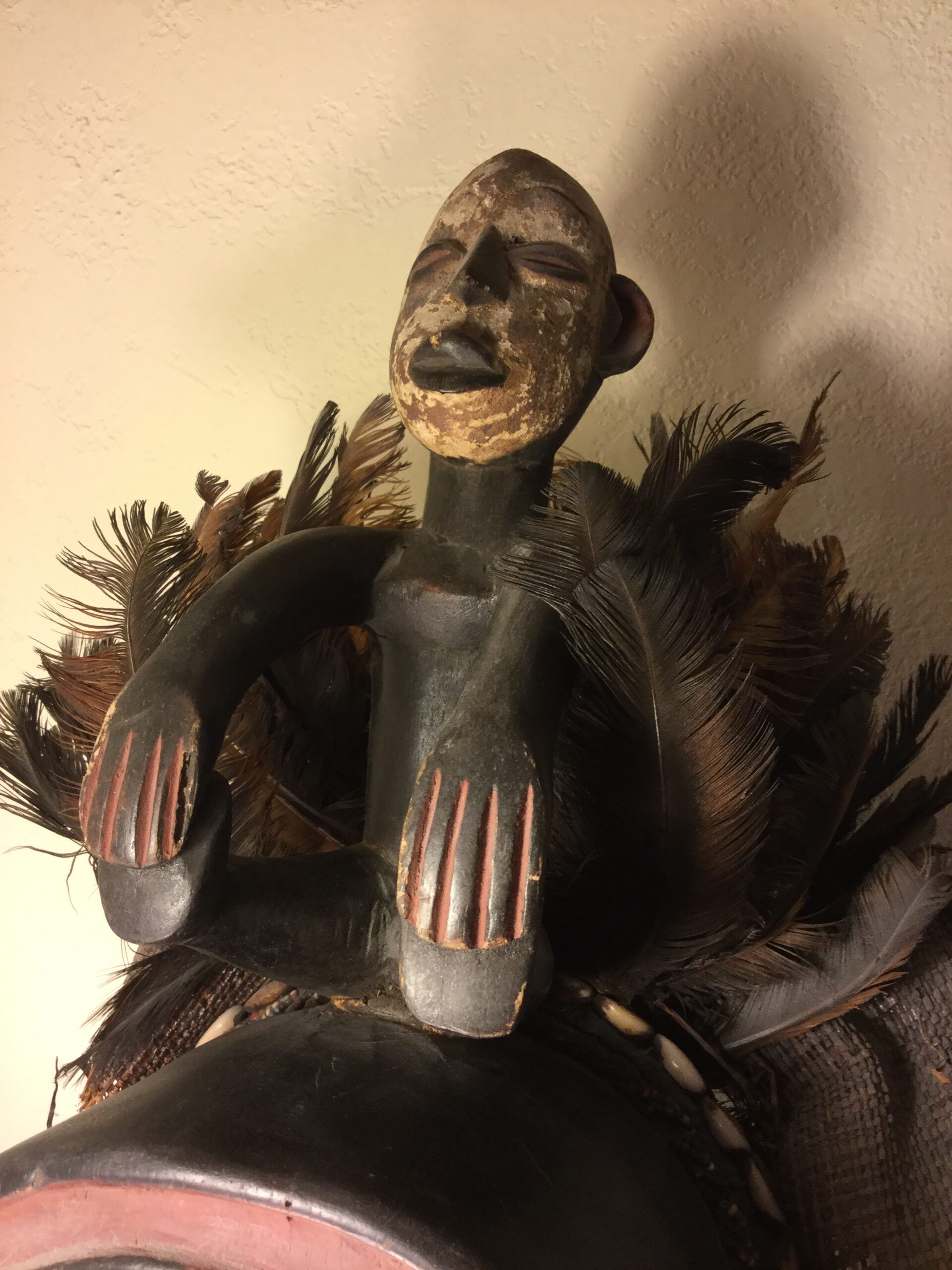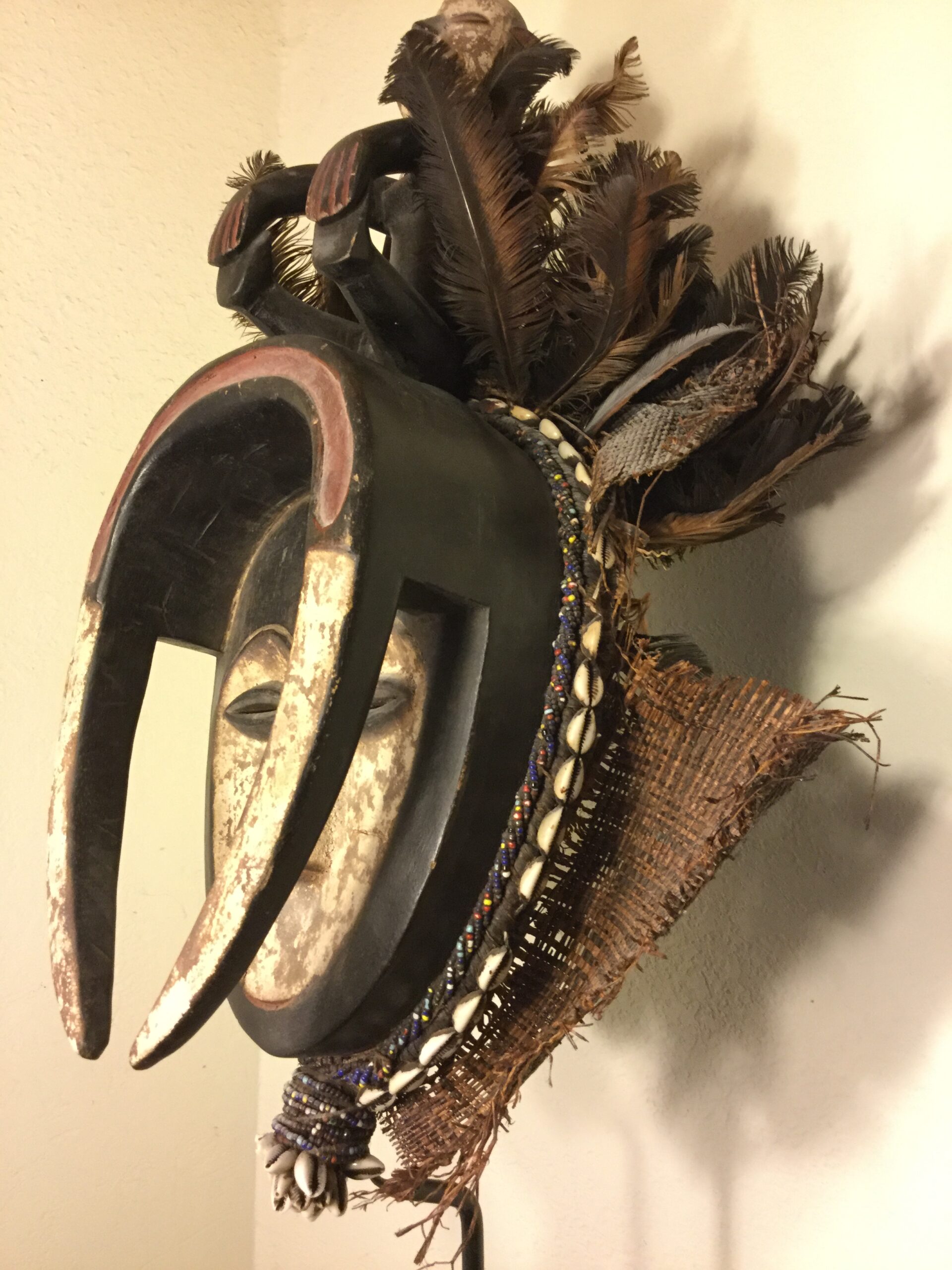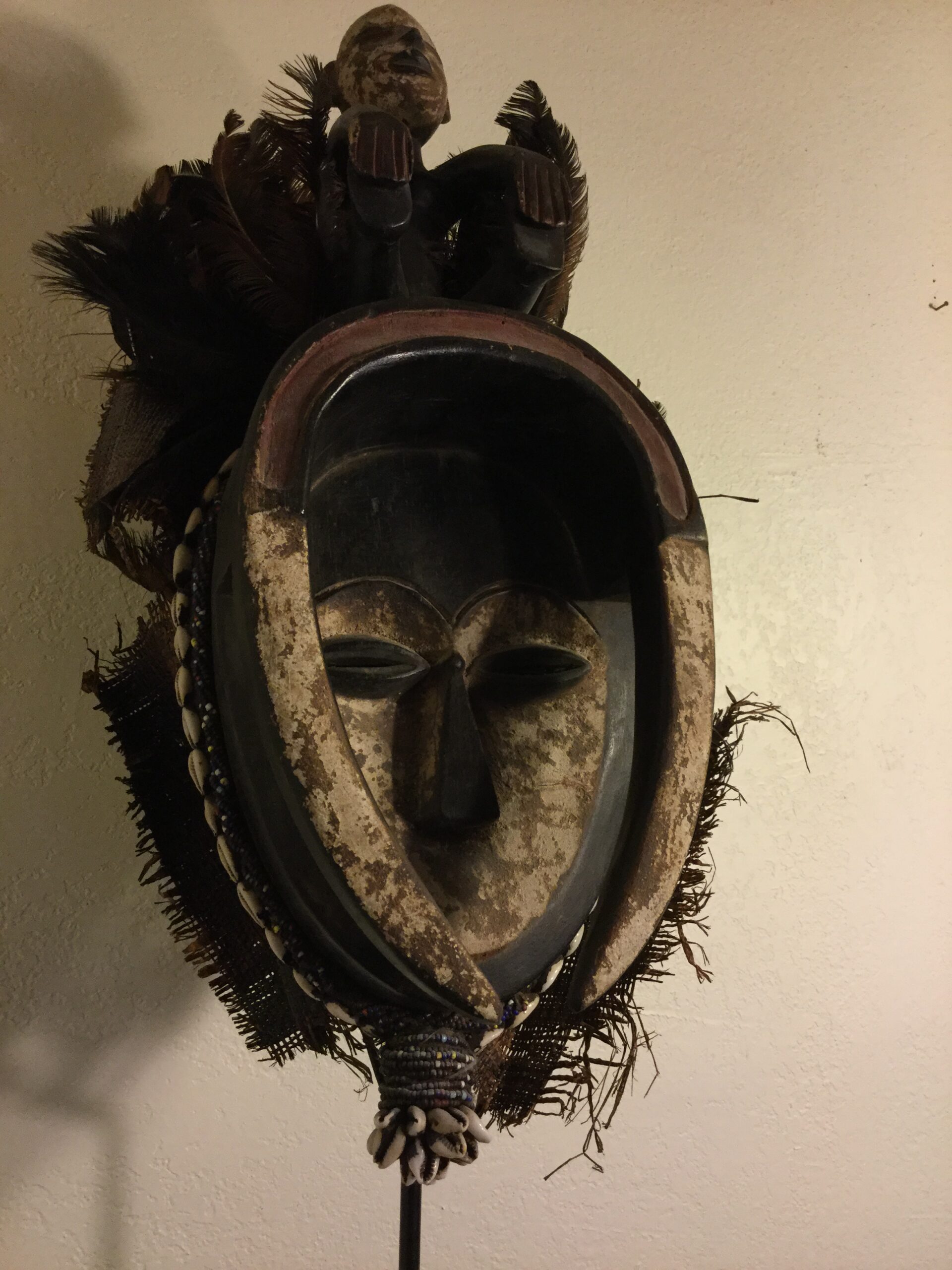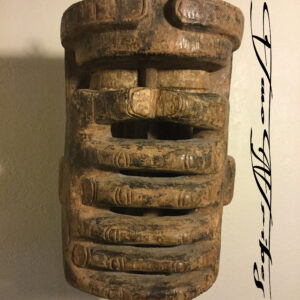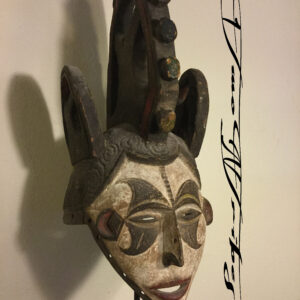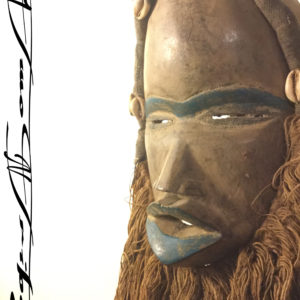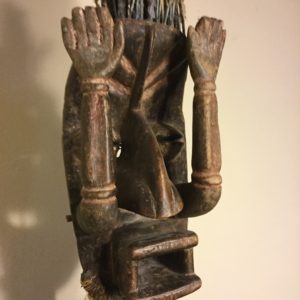Description
The Kwele occupy a great forest region on the borders of Gabon, Cameroon and the Republic of Congo. Their village communities comprised a number of lineages and were governed in the usual way for “headless” equatorial societies, that is in a diffuse and more or less informal manner. The Kwele believe that unexplained deaths, epidemic smallpox, and other mysterious threats to the well-being of individuals or the community are caused by witchcraft. Witches are believed to live in male or female hosts, from which they emerge at night to feed upon the internal organs of their victims. The antidote to witchcraft is the beete ritual, which includes masked performances. The beete cult reinforces unity and maintains social order. The beete ritual, which lasted for a week, would open with the departure of men into the forest to hunt antelope, whose flesh, seasoned with medicines, had to be eaten at a meal at the closing ceremony. During the hunt, women and children stayed in the village; after one or two days, ekuk masks would “leave” the forest, enter the village, and invite the people to come dance and sing. Ekuk means both “protective forest spirit” and “children of beetle.” It displays a flat surface and often has a whitened heart-shaped face, a triangular nose, coffee-bean eyes and small or non-existent mouth. This mask, with two large horns, represents the antelope. The faces are usually painted in white kaolin earth, a pigment associated by the Kwele with light and clarity, the two essential factors in the fight against evil.
.
